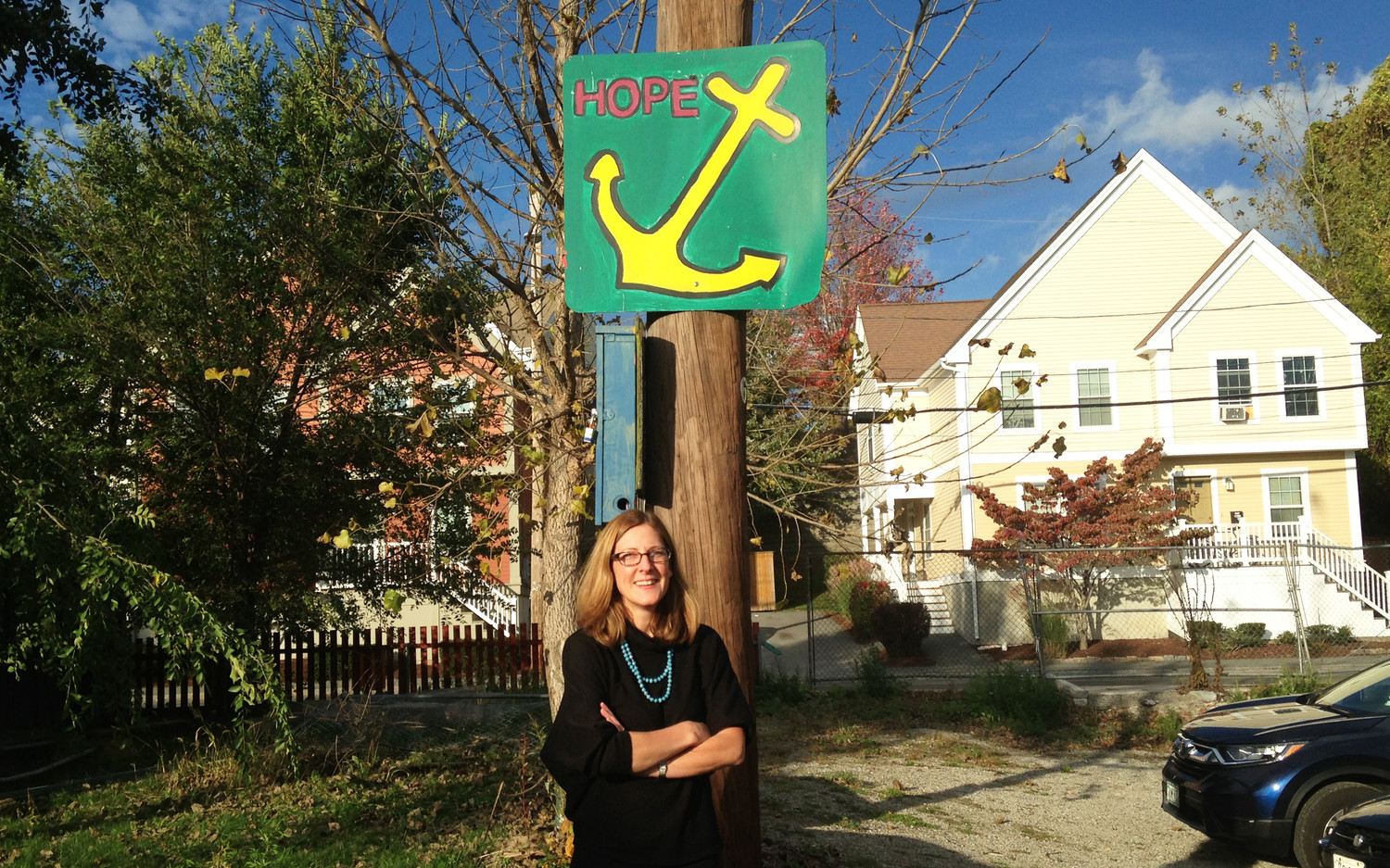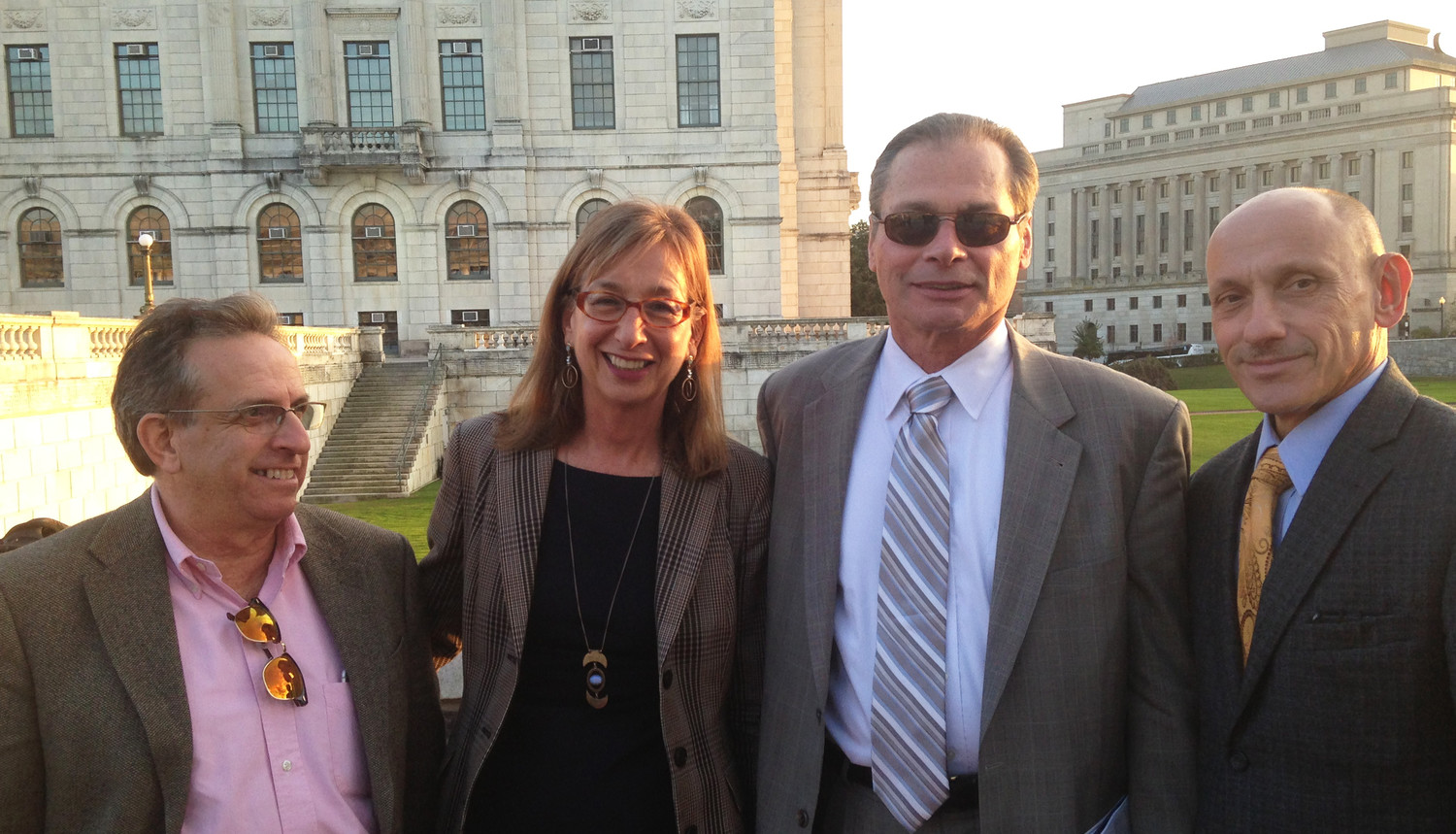Senators go on an amazing journey, deep into resilient city neighborhoods
With Barbara Fields of Rhode Island Housing serving as host, and three directors of community development corporations serving as guides, a bevy of state senators and reporters tour the changing landscape of Smith Hill, Olneyville and the South Side
There were elderly couples, middle-aged couples, and young couples; a mother and daughter dressed for church; a very pregnant mom; and numerous families with young children, some with a mom, some with a dad.
If Rebelle Artisan Bagels were to expand, would they consider seeking out a location in Smith Hill, Olneyville or the South Side? How can initiatives such as Harvest Kitchen in Pawtucket be expanded to other neighborhoods? Could there be a food tour organized by Eat Drink Rhode Island that catered to the diversity of cuisine in Rhode Island?
PROVIDENCE – If the road to prosperity begins at the front door of your own home, then the recent trolley tour of the resilient city neighborhoods of Smith Hill, Olneyville and the South Side offered strong affirmation of the economic engine that investments in new affordable housing have become for Rhode Island.
The tour was organized by Rhode Island Housing, in collaboration with the Senate Committee on Housing and Municipal Government, as a way to showcase how investments in housing have become the foundation to leverage growth and economic revitalization in many of what once were considered some of the meanest neighborhoods in Providence – and to dispel notions about what affordable housing actually is.
“I don’t like using the [phrase] affordable housing,” explained Barbara Fields, the executive director of Rhode Island Housing, kicking off the tour on Nov. 2, because “It conjures up images of the 1940s, 1950s and 1960s.”
The new housing developments, Fields said, were easy to identify because they featured modern designs, wrought iron fences, flower boxes, shiny metal mailboxes, backyard spaces and landscaping, helping residents display a pride in where they live.
Interspersed with the new housing developments, there were still a few eyesores: the boarded-up, abandoned, foreclosed properties, remnants from the Great Recession in the late 2000s.
Further, Fields said, describing the breadth of her agency’s mission, “We’re talking about housing for everyone in Rhode Island, not just city neighborhoods.”
All aboard
The gods and goddesses appeared to be smiling on the tour, which took place on an early November afternoon filled with bright sunlight as temperatures hit 70 degrees.
On board the RIPTA trolley that left Smith Street in front of the State House were Sen. Joshua Miller, Sen. Harold Metts, Sen. Louis DiPalma and Senate President Dominick Ruggerio, among others, including a host of reporters and photographers.
On Smith Hill
At each neighborhood, a director from the local community development corporation jumped on the trolley to serve as tour guide. On Smith Hill, it was Jean Lamb of the Smith Hill CDC, who pointed out many of the 175 housing units that her organization has helped to build, as the trolley wove its wave through the nooks and crannies of the neighborhood.
Smith Hill, Lamb said, is one of the city’s most diverse neighborhoods, with families from more than 30 countries living there.
The projects have included a mix of both rental properties and home ownership sites, Lamb said.
In Olneyville
In Olneyville, Jennifer Hawkins, the executive director of ONE Neighborhood Builders, joined the tour, as the trolley wended its way through the congestion of the neighborhood streets, pointing out the numerous properties that had been redeveloped as part of the Amherst Gardens development.
The trolley swung past the former Imperial Knife Factory at 60 King St., where new construction is underway on 60 new apartments – 54 affordable units and six market-rate apartments – that are scheduled to be completed and ready for occupancy by the fall of 2018.
The trolley tour then stopped at Riverside Park, a newly refurbished park that features a community garden adjacent to the bike path and lined with new redeveloped housing projects across the street. Providence police officers joined with Alice Lehrer, executive director of the Woonasquatucket River Watershed Council, who talked about how neighborhood engagement had been a key to redesigning the park. What once had been a hotspot for crime was now a place where families gathered, according to the police officers.
The nearby William D’Abate elementary school now has one of the lowest rates of absenteeism in the state, a fact that was offered as proof of the positive change in the neighborhood.
The new affordable rental properties adjacent to the park, Hawkins told ConvergenceRI, had a waiting list of three to five years.
Through the South Side
The next stop on the trolley tour was the South Side, where Carla De Stefano, executive director of SWAP, or Stop Wasting Abandoned Properties, took over as tour guide. The community development corporation has developed more than 1,400 home ownership units, 350 apartments and 25,000 square feet of commercial and community space, pumping some $107 million into South Providence.
As with Olneyville, the housing market in South Providence has heated up, despite the fact that there are few if any private developers. DeStefano said that in the last year, SWAP had developed 13 new homes, and all were sold before the foundations were dug.
Another problem DeStefano identified was the scarcity of contractors to do the work on new projects.
In terms of community engagement, DeStefano told how she had provided color swatches to children living in the neighborhood to have them choose the paint colors of a new development, so that they could have pride of “ownership” in the choice of paint colors.
The future
On the way back to the State House, in response to a question from Sen. Miller, Fields talked about how the money that voters approved in a $50 million housing bond was being spent, with an initial $10 million being targeted at housing blight.
In 2016, Rhode Island Housing financed $162 million to construct or rehabilitate 1,186 apartments, provided $291 million in loans to 1,625 homebuyers, and helped 1,465 new homeowners with a total of $9.3 million in down payment and closing cost assistance.







